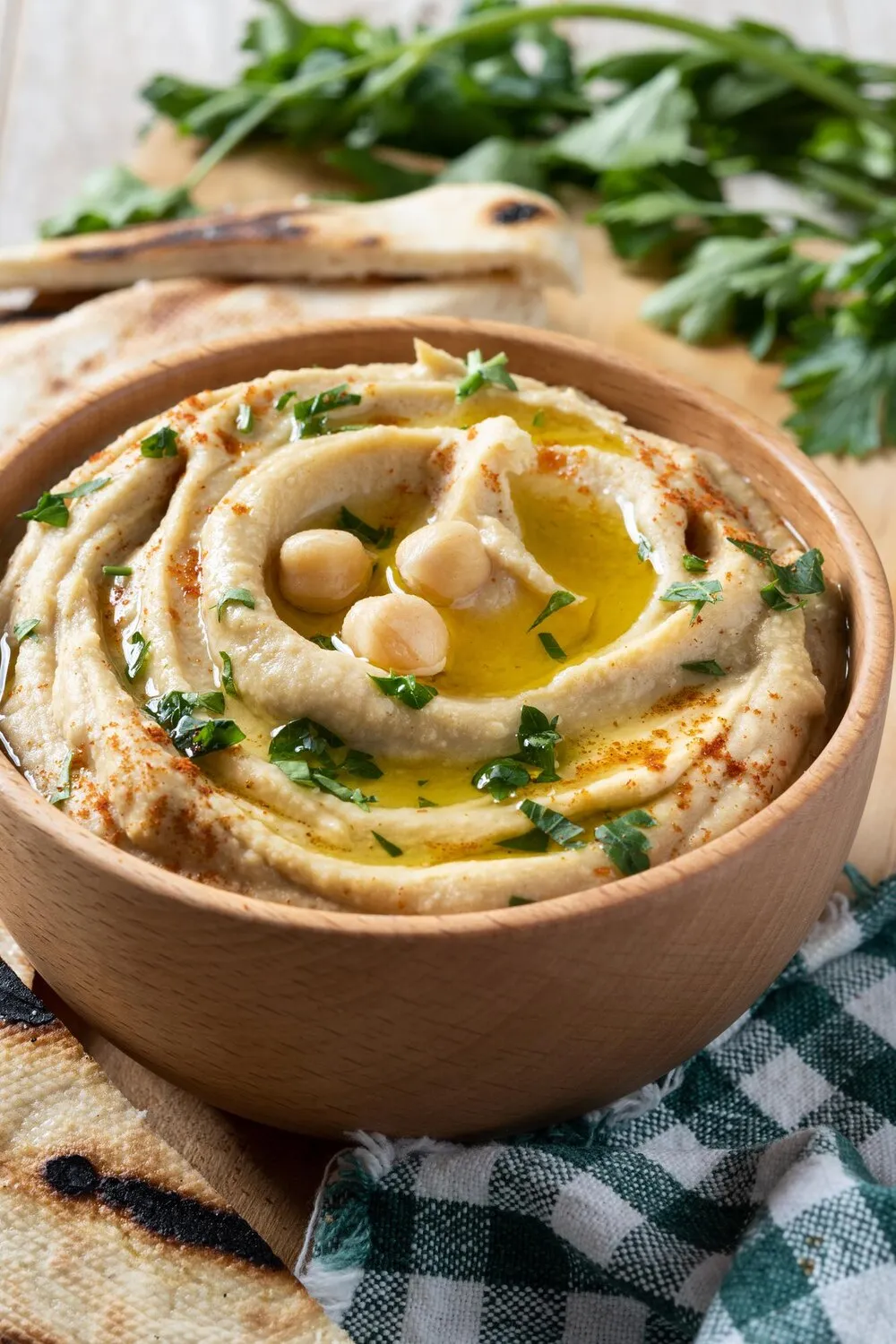
Hummus
A dip or spread made from cooked, mashed chickpeas blended with tahini, lemon juice, and garlic.
Nutrition Facts
* The % Daily Value (DV) tells you how much a nutrient in a serving of food contributes to a daily diet. 2,000 calories a day is used for general nutrition advice.
The history of hummus is deeply intertwined with the history of the Levant. Chickpeas have been cultivated in the Middle East for millennia, and tahini (sesame seed paste) has also been a staple ingredient in the region for centuries. While the exact origin is debated, variations of chickpea purees with tahini, lemon, and garlic have been consumed for centuries, evolving into the dish we know as hummus today.
Hummus is a staple food in the Middle East and is deeply ingrained in the culinary traditions of the region. It is a versatile dish enjoyed as a dip, spread, or side dish, often served with pita bread, vegetables, or falafel. Its popularity has spread globally, making it a beloved and widely consumed food worldwide.
Social Gathering Staple
Hummus is often served as part of a mezze platter, a selection of small dishes served at social gatherings and celebrations throughout the Middle East. Sharing hummus is a sign of hospitality and togetherness.
Ramadan Tradition
During the Islamic holy month of Ramadan, hummus is a popular food for Iftar (the evening meal that breaks the fast) due to its high protein and fiber content, providing sustained energy.
Culinary Identity
Hummus is considered an important part of the national cuisines of several Middle Eastern countries, and there are often friendly (and sometimes not-so-friendly) debates about who makes the best hummus.
Hummus offers a balanced and earthy flavor profile with creamy, nutty, and tangy notes. The primary flavors come from chickpeas, tahini, lemon juice, garlic, and olive oil, creating a versatile and satisfying taste.
The dominant flavor is the earthy, slightly nutty taste of chickpeas, providing a creamy and substantial base. Tahini contributes a rich, nutty, and slightly bitter note, enhancing the overall texture and flavor complexity. Lemon juice adds a bright, tangy acidity that cuts through the richness and balances the flavors. Garlic provides a pungent and aromatic element, adding depth and warmth. Olive oil, drizzled on top, adds a fruity and peppery finish, contributing to the luxurious texture and overall flavor harmony. Salt balances the overall flavor profile.
Chickpea Preparation
Soaking dried chickpeas overnight and then cooking them until very soft is essential for achieving a smooth texture. Some cooks even peel the chickpeas after cooking to further enhance smoothness.
Tahini Quality
Use high-quality tahini made from sesame seeds that have been lightly roasted. Avoid tahini that is bitter or overly oily.
Ice Water Trick
Adding ice water while blending helps to create an exceptionally smooth and creamy texture. Start with a small amount and add more as needed until the desired consistency is reached.
Lemon Juice
Freshly squeezed lemon juice is crucial. Adjust the amount to your preference, but don't skimp on the acidity – it's essential for balancing the flavors.
Explore additional Hummus dishes and restaurants
Explore HummusDiscover top dining spots and culinary experiences in Jaén.
Explore JaénLearn more about the food culture, restaurant scene, and culinary heritage of Spain.
Explore Spain